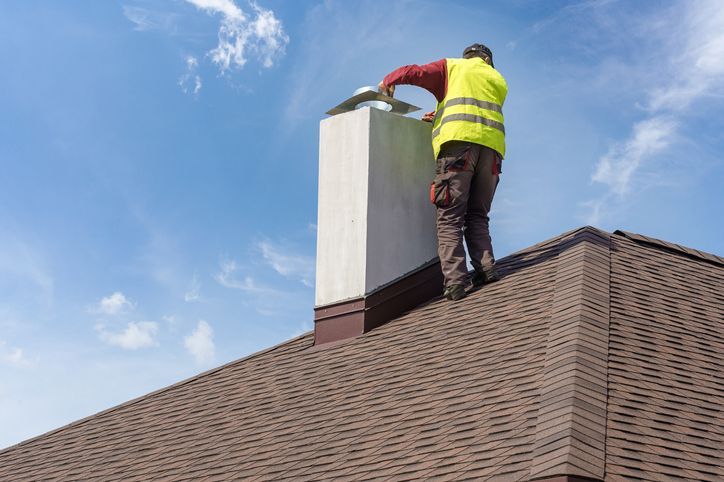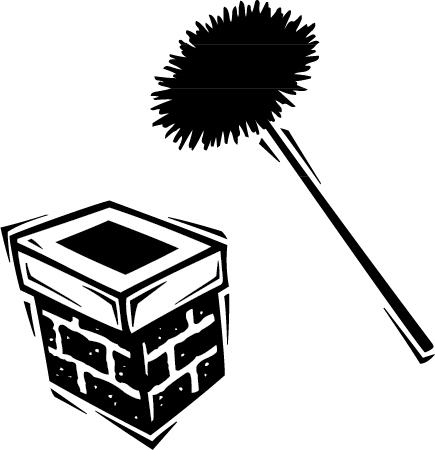Can I Get Rid of My Chimney?
Options for Sealing or Upgrading Your Chimney

If you're a homeowner with an old chimney, consider removing it. After all, it's a big eyesore, and the repair costs can add up quickly. But before you take action, there are some essential things to consider when considering whether or not to get rid of your chimney.
Reasons to Remove an Old Chimney
In some cases, it is a good idea to have your old chimney removed. A chimney that is not being used and needs to be maintained can lead to various issues causing roof leaks and heat loss while also wasting space within your home. The top reasons you may need to remove an old chimney include:
Heat loss through the chimney flue: This happens when the mortar between brick and masonry joints becomes cracked or broken. When this happens, the heat inside the home is lost up the chimney.
Heat Loss through Conduction: When you use your fireplace, the thermal mass of the chimney stack is also heated. The stonework of your chimney conducts indoor space heating, which is lost through the portion of the chimney stack sticking out of the top of the roof.
Leaks/Damage: Chimneys, especially older ones, put your roof at risk of leaking. This risk continues to increase as your chimney ages. Your chimney can leak water and air; if it is in disrepair, it can become a hazard as parts of the chimney can fall off your home.
Wasting Space: If you need more space and aren't using the chimney, removing it can free up space on multiple floors of your home. Removal is beneficial if you have a larger chimney.
What if Getting Rid of My Chimney is Not an Option?
In some cases, removing your chimney may not be an option. You must have a professional chimney inspection completed to ensure that nothing is currently being vented through the chimney. This is standard practice in older homes where people often vent their water heater or HVAC system through the chimney.
Suppose you try to remove and seal over a chimney used as a vent. In that case, this can lead to condensation building up and deteriorating the inside of the chimney while also causing gases to leak into your home and expose you to toxic fumes.
Alternatives to sealing your chimney include:
Chimney caps: A chimney cap is installed at the top of the chimney, above the chimney crown. This cap will help keep the rain out of the chimney to prevent rusting the dampers and weakening the walls and the ceiling around the fireplace. It also keeps the sparks and embers in to prevent fires. This cap will also keep animals out of your chimney and prevent them from creating nests.
Chimney liners: A chimney liner is an insulated, corrosion-resistant lining that is installed to prevent deterioration caused by moisture, reduce creosote and soot buildup, and vent harmful gases so they don't build up on the home or corrode your chimney.
Waterproofing: Older masonry chimneys should be waterproofed. a Masonry chimney is held together by a cement material that will deteriorate faster if exposed to water for prolonged periods. Although bricks typically have a waterproof outer shell baked into them, as the elements like heat, cold, snow, wind, and rain take their toll, water can eventually break through to the brick. A waterproof sealer can be applied to the chimney to extend its lifespan and prevent water damage.
Chimney Repair Services in Pittsburgh
Whether you are looking for chimney repair services in Pittsburgh or need a chimney cap or liner installation, the experts at Piccadilly Chimney Sweep are here to help. We specialize in chimney repair, maintenance, and cleaning services so that you can ensure your chimney is working correctly and efficiently. Contact us today to learn more!

Author: Piccadilly Chimney Sweep
Since 1990, Piccadilly Chimney Sweep of Pittsburgh has provided Western Pennsylvania with top-quality chimney cleaning, repairs, and rebuilding, as well as fireplace repair and cleaning services.
Contact Our Experts
– Receive a Free Quote
– Estimates on Fireplace Service
– Schedule a Consultation with an Expert
Footer Form
We will get back to you as soon as possible
Please try again later
Contact Us
Opening Hours
- Mon - Fri
- -
- Sat - Sun
- Closed
All Rights Reserved | Piccadilly Chimney Sweep
